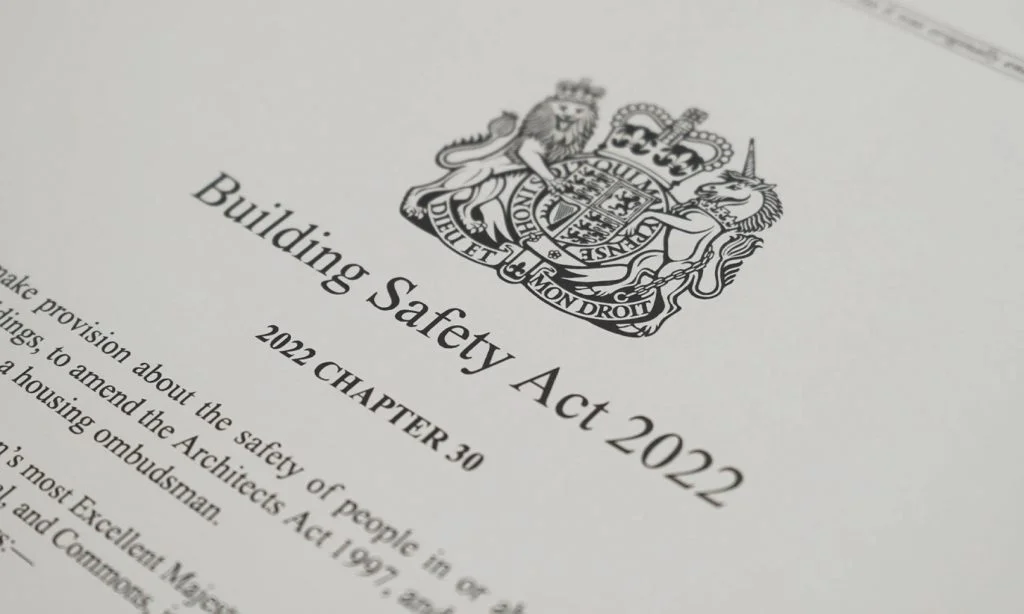A New Era for UK High-Rise Development
The Grenfell Tower catastrophe changed the UK building sector in a big way, and it all came to a head with the enactment of the Building Safety Act 2022. The main goal of this law is to improve fire and structural safety, but it is also unintentionally starting a bigger, more complete change in the built environment. It is making the industry think about not only the safety of materials, but also where they come from, what they do, and how they may help make the future more sustainable. The Building Safety Act’s main ideas of accountability and openness are now closely tied to the goals of making high-rises more sustainable, such as having no carbon emissions and getting materials in a way that is ethical. This is more than just a change in the law; it’s a change in the way we think about how we design, build, and run our buildings for the long term.
The Golden Thread of Information: Weaving Safety and Sustainability
The “Golden Thread of Information” is a key part of the Building Safety Act. This is not a physical thing; it is a digital record of a high-risk building’s safety-critical data that must be kept up to date from the time it is designed and built until it is torn down. To be called a “higher-risk building,” a building must be at least 18 meters tall, have at least seven floors, and have at least two apartments.
The Golden Thread is the only place to find all the information you need about a building, from its as-built drawings and material specifications to its maintenance schedules and modification logs. It makes sure that “the right people have the right information at the right time,” which leads to a new level of responsibility.
The Golden Thread is also very important for sustainability in a big way. The Act makes a digital passport for the building by demanding a complete record of every part and system, including where they came from and how well they work. This level of openness makes it easier to:
Trace materials: It lets you check that the materials were sourced ethically and in a way that is good for the environment and society, so it’s hard to use materials that have a bad environmental or social impact.
Track energy performance: Detailed information about a building’s systems and insulation lets you keep a close eye on how much energy it uses, which is important for meeting future sustainability goals.
Plan for the end of life: A complete record of materials makes it easier to take things apart and recycle them in the future, which is how a real circular economy works.
The Golden Thread’s focus on long-term data management changes the focus from the cost of creating a structure to its total lifecycle value, which is a key idea in sustainable design.
The Future Homes Standard and a Push for Net Zero
The Building Safety Act is about safety, but its goals are in line with the UK’s larger environmental goals, especially the Future Homes Standard (FHS). The FHS, which will be required starting in 2025, intends to make sure that new homes create 75–80% less carbon emissions than homes built under older rules. For tall buildings, this entails getting rid of all traditional gas heating systems and switching to low-carbon ones.
The FHS says that we need to switch to cleaner energy sources like air or ground source heat pumps and cleaner heat networks. Parts L and F of the Building Regulations are being raised to get ready for this shift. These parts focus on better energy efficiency and ventilation. The standards are meant to make buildings that are “zero-carbon ready,” which means they are so energy-efficient that they can become operationally net-zero as the UK’s national electrical grid continues to decarbonise.
High-rise residential and commercial buildings are a great place to make this change since their size and density make technologies like communal heat networks and big solar panel installations quite effective. The Building Safety Act, which requires high-quality construction and a thorough record of it, and the FHS, which sets a high bar for energy performance, are working together to make the built environment more sustainable and resilient.
Beyond Materials: The Social and Ethical Dimension
Sustainability isn’t simply about how things affect the environment; it also includes social and moral issues. The Grenfell Tower catastrophe has made many very worried about the construction sector and how it works. The fight for safety has become a strong force for social sustainability. It makes sure that buildings are not only safe, but also good for the health and well-being of the people who live in them and the community as a whole.
More and more people are paying attention to ethical sourcing and supply chain transparency. A lot of developers and contractors are now choosing to get certifications like BES 6001 to show that they are responsibly procuring building materials. This means making sure that resources are sourced in a way that is fair to workers and has as little impact on the environment as possible. For example, more and more projects are using Forest Stewardship Council (FSC) certified wood to make sure it originates from forests that are well-managed.
Also, social sustainability in high-rise design means developing communities that are livable and successful. This includes:
Biophilic Design: Adding natural features like living walls and large green spaces to make residents healthier and the air cleaner. “The Eden” in Manchester is a famous example because it has the biggest living wall in Europe.
Community Integration: Designing buildings that link with their neighbourhoods by using mixed-use spaces, public art, and shared facilities that enable people to get to know one other.
Health and Well-being: Creating healthy, restorative living and working spaces goes beyond basic safety to include things like natural light, air quality, and sound comfort.
The Building Safety Act is helping to create a culture where social value and environmental performance are considered as equally as important as structural integrity by putting safety, accountability, and ethics at the top of the list. The law isn’t only about stopping another tragedy; it’s also about making the future better, safer, and more sustainable for everyone.
For more content like this CLICK HERE
Reference





